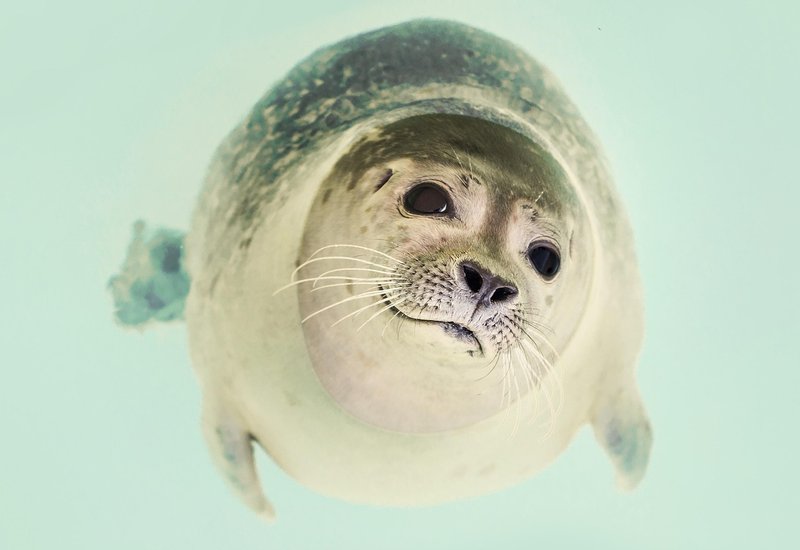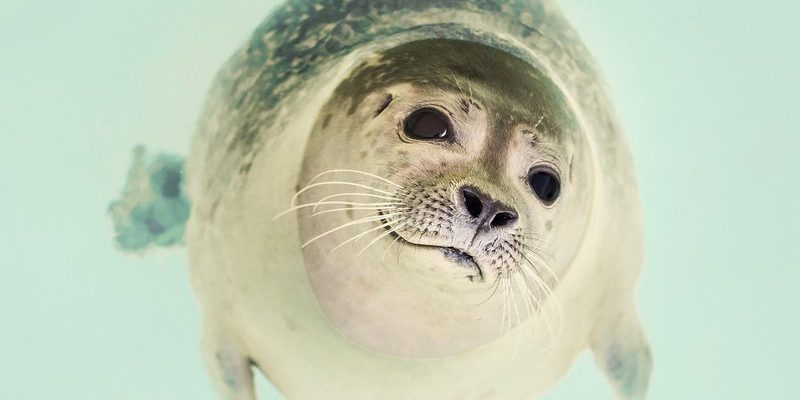
These marine mammals belong to the family Phocidae, which includes various species found across the globe. Whether you’re a wildlife enthusiast or just someone curious about these adorable creatures, there’s so much to learn about them. From their impressive swimming skills to their intricate social lives, seals have some fascinating traits that make them truly remarkable. So, let’s dive into some eye-opening facts about seals that you might not have known!
1. Seals Are Expert Swimmers
When it comes to swimming, seals are the Olympic champions of the animal kingdom. They can hold their breath underwater for impressive amounts of time—certain species, like the Weddell seal, can stay submerged for over an hour! Imagine diving deep and gliding effortlessly through the water, all while exploring the vibrant life beneath the waves. Seals use their powerful flippers to propel themselves forward, and they can reach speeds of up to 25 miles per hour.
And here’s the thing: seals are not just fast swimmers; they also have a unique way of moving. When they swim, they use their rear flippers to propel themselves and steer with their front flippers, almost like a well-oiled machine. Their streamlined bodies are built for speed and grace, making them one of the most agile animals in the ocean.
2. They Have an Amazing Sense of Hearing
Seals are equipped with some pretty amazing senses, and hearing is definitely one of their superpowers. Underwater, seals can pick up sounds much better than humans can. This is vital for their survival, especially when hunting for fish or avoiding predators. Imagine being in a crowded restaurant where everyone is talking, yet you can hear your friend’s voice clearly from across the room. That’s how seals can detect the slightest noises in the water.
Interestingly, seals can also hear high-frequency sounds that are inaudible to humans. This ability helps them track down prey like fish and squid, which can be quite the challenge in the vast ocean. Their keen hearing is not just about hunting, though; it also plays a crucial role in communication with other seals.
3. Seals Can Sleep Underwater
You might be wondering how seals manage to get their beauty sleep in the ocean. Well, seals have adapted to do just that! They can take naps underwater by slowing down their heart rate and allowing themselves to drift into a light sleep. This is similar to how we might doze off while watching TV on the couch.
During these underwater snoozes, seals will often float just below the surface, allowing them to pop up for air as needed. This ability to sleep while still being mindful of their surroundings is a remarkable adaptation that helps them stay safe from predators.
4. Some Species Are Truly Massive
While many people visualize seals as cute, blubbery creatures, some species can be surprisingly large. The elephant seal, for instance, can weigh over 4,000 pounds! That’s as heavy as a small car! Males are especially massive, growing up to 20 feet in length.
To put their size in perspective, think of them as the gentle giants of the ocean. Despite their considerable bulk, elephant seals are agile swimmers and can dive deep into the ocean in search of food. Their size is not just for show; it often helps in mating rituals and territorial disputes among males.
5. Seals Have Social Behaviors
Believe it or not, seals are quite social animals. They often gather in large groups, called colonies, on beaches or rocks to bask in the sun. Imagine a group of friends lounging around, sharing stories and enjoying each other’s company—this is similar to how seals interact.
Within these groups, seals communicate through a range of vocalizations, including barks, growls, and even howls. Each species has its own unique “accent” or sound profile, so you could say they have their version of “seal language.” You might find it amusing to watch them interact, as their social behaviors often involve playful antics, such as splashing in the water or play-fighting with one another.
6. Seals Are Remarkable Divers
Did you know that seals can dive to some incredible depths? Some species, like the elephant seal, can reach depths of over 5,000 feet! That’s deeper than most scuba divers will ever go! When seals dive, they can travel long distances in search of food, sometimes covering hundreds of miles in a single trip.
Their bodies are specially designed for these deep dives. Seals can store large amounts of oxygen in their muscles and blood, allowing them to remain underwater for extended periods. Plus, their flexible lungs can collapse under pressure, preventing them from suffering from barotrauma—something that can affect human divers.
7. Their Diet Is Varied and Interesting
Seals have diverse diets that vary by species and location. Most seals are carnivorous and feast on a mix of fish, squid, and crustaceans. Think of them as the seafood lovers of the ocean! Some species, like the harbor seal, might opt for a more gourmet approach, indulging in delicacies like octopus and crabs.
Interestingly, seals play a role in keeping marine ecosystems balanced. By preying on certain fish species, they help regulate populations and ensure that no single species dominates the ecosystem. It’s like how a well-balanced meal can boost our health; seals contribute to the health of the ocean.
8. Seals Are Found All Over the World
Seals can be found in various habitats around the globe, from icy Arctic waters to warmer coastal regions. Different species have adapted to their environments, leading to a diverse range of behaviors and lifestyles. For instance, the Arctic seal has thick layers of blubber to help it withstand freezing temperatures, while tropical species might be more streamlined for agility.
Their wide distribution means that seals can be observed in many places, making them accessible for wildlife enthusiasts and researchers alike. So, whether you’re on a beach in California or an ice floe in Antarctica, there’s a good chance you might spot one of these wondrous creatures!
9. Seals Have Unique Features
Each seal species has its distinct appearance, making them easy to identify. For example, the fur seals have a thick coat that keeps them warm, while others, like the harp seal, are known for their striking black spots. The variations in size, shape, and color add to the charm of these animals.
Moreover, some species have unique physical features that aid survival. Many seals have a layer of blubber for insulation, which can be quite thick in colder waters. This blubber is also crucial for buoyancy, helping them float effortlessly while resting or sleeping.
10. Conservation Efforts Are Crucial
Unfortunately, many seal species face threats due to human activity. Overfishing, pollution, and climate change impact their habitats and food sources. Conservation efforts are critical to ensure these adorable marine mammals continue to thrive.
Organizations around the world are working to protect seals through habitat conservation, rehabilitation programs, and public education. By raising awareness about the importance of seals in our marine ecosystems, we can all contribute to their survival. Remember, future generations deserve to enjoy the beauty of seals just as much as we do!
As we conclude our journey through the fascinating world of seals, it becomes clear that these animals are much more than just cute faces. They showcase remarkable adaptations and social behaviors that highlight the complexity of ocean life. Next time you see a seal lounging on a rock or swimming gracefully, you’ll know a bit more about what makes them so special!

